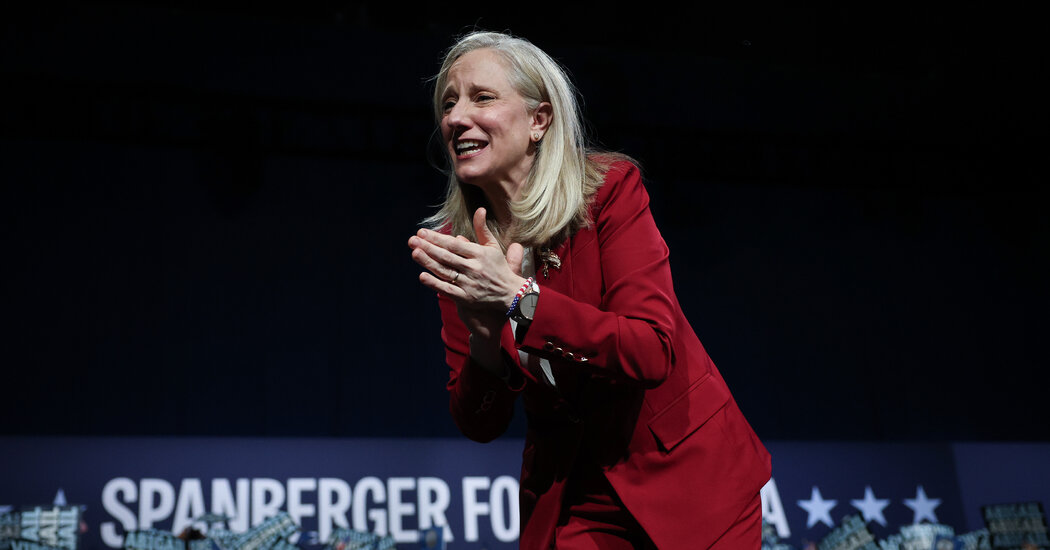Copyright The New York Times

The Democratic Party has plenty of challenges, but they were easy to forget Tuesday night. Abigail Spanberger and Mikie Sherrill won governor’s races in Virginia and New Jersey by double-digit margins. Zohran Mamdani will be New York’s mayor. Democrats posted strong showings in Pennsylvania, Georgia and elsewhere. In many ways, the outcome of off-year general elections like these are deeply imperfect measures of the national political environment or the state of the parties. They’re not federal elections. They’re shaped by local issues and idiosyncratic candidates. And Tuesday’s were decided by the kind of highly engaged, lower-turnout electorates that have repeatedly backed Democrats in recent years. Democrats also had an excellent showing in November 2023, one year before the last presidential election. They held the Kentucky governor’s mansion, won key races in Virginia, won a Supreme Court election in Pennsylvania, and were surprisingly competitive in the Mississippi governor’s race, while in Ohio ballot measures on abortion rights and marijuana legalization prevailed. Democrats thought it meant they had the political winds at their backs heading into the 2024 election; they were wrong. But next year is a midterm election, not a presidential one. And it wasn’t just one or two down-ballot races where Democrats benefited from strong candidates, but dozens of races across the country. Even Jay Jones, the embattled Democratic attorney general candidate in Virginia, managed to win comfortably. Signs for 2026 Over the last few years, the Democratic Party has excelled in lower-turnout elections — which is to say, anything but a presidential election. Since President Trump’s second term began, Democrats have turned it up another notch. In special elections, Democrats have outrun Kamala Harris’s performance by 15 percentage points on average, according to The Downballot. They won the Wisconsin Supreme Court election in April by double digits. And Tuesday night, Democrats outran Ms. Harris by nine points in Virginia and seven points in New Jersey. There’s no guarantee that this track record of Democratic success will continue next fall, but there’s pretty good reason to think the midterms will go well for Democrats. Historically, the party out of power fares well in midterm elections, just as the party out of power usually fares well in off-year general elections, as Democrats did Tuesday night. In recent years, the Democrats have also had an advantage among the most highly engaged and well-educated voters who make up a disproportionate share of lower-turnout elections. While turnout data won’t be final for some time, it’s likely that Democrats benefited from a strong showing by those groups yet again. Indeed, the available data on the turnout by party registration in several New Jersey counties suggests that the electorate was more favorable to Democrats in New Jersey than it was in either 2024, 2022 or 2021. Similarly, early-voting data generally seemed stronger for Democrats than in recent cycles. If there’s any reason Democrats haven’t been exuberant about their chances next fall, it might be the polling. While Mr. Trump’s approval ratings have been pretty weak, the Democrats lead the generic midterm polling by only about three or four points among registered voters. That would probably be enough to retake the House, even with the current round of redistricting, but would not be the landslide of Democratic dreams. It wouldn’t be close to the Democrats’ strong performance in 2018, either. But Tuesday night, the Democrats did quite a bit better than the polls suggested. In New Jersey, the polls underestimated Democrats by 10 points; in Virginia, by five points. It continues a pattern of polls underestimating Democrats in recent off-year elections, while badly underestimating Republicans when Mr. Trump is on the ballot. Bigger issues still linger Ever since Mr. Trump’s victory last year, Democrats have been agonizing about the state of their party and its future. Tuesday didn’t really offer answers. The relatively disengaged and disaffected voters who propelled Mr. Trump’s victory probably sat this one out. The Democratic rebound in heavily Hispanic parts of New Jersey, for instance, could be mostly or entirely driven by changes in turnout. The New York mayoral race doesn’t clarify things, either. In many respects, Mr. Mamdani’s election is extraordinary, and the enormous youth turnout for his candidacy is extraordinary as well. When the data is final, it will probably show that the share of voters 18 to 29 approached or perhaps even exceeded its share from the last presidential election. This is unheard-of. It’s the kind of youth surge that the Bernie Sanders campaign promised, but never delivered. But with Andrew Cuomo — a Democrat — running as an independent, the race did not ultimately test Mr. Mamdani’s strength in a one-on-one contest against a Republican. The Democratic vote was split, and it’s impossible to know how many of Mr. Cuomo’s traditionally Democratic supporters would have voted for the Republican. It’s possible most Cuomo voters would have come over to his side, but, again, we won’t know. And while Ms. Spanberger and Ms. Sherrill fared extremely well, it is not at all obvious whether their campaigns offered a solution to the party’s problems. They campaigned on the cost of living and against Mr. Trump, but they didn’t find what the party has been grasping for: a way to channel the energy of the party’s base without alienating — or better still, appealing to — swing voters. Four years ago, Glenn Youngkin’s campaign for Virginia governor did a lot of what Democrats probably wish their candidates might have done. He campaigned on a new set of issues by capitalizing on the simmering backlash against pandemic era restrictions and “woke.” In many ways, it foreshadowed the struggles that Democrats would face in 2024 and beyond. And it let someone who might have otherwise been a Mitt Romney-like private-equity establishment type turn into the moment’s conservative hero. If the Trump era has brought a similar opportunity for Democrats today, they haven’t seemed to have found it yet.



